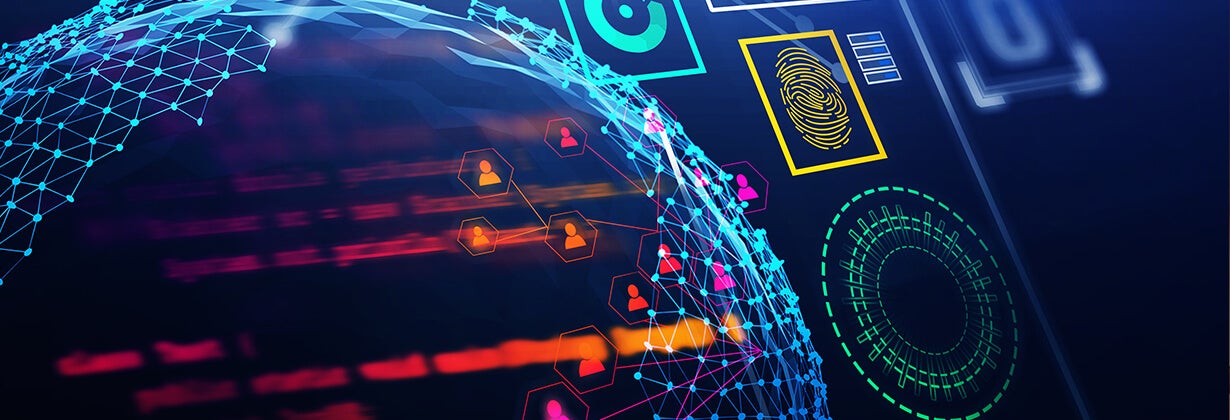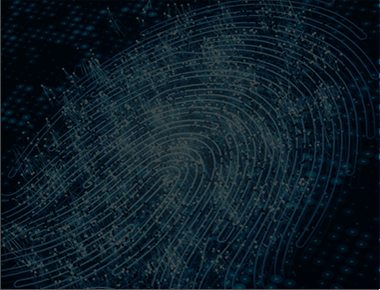
Make Smarter Identity Decisions
Support Well-informed Identity and Trust Decisions Across the Customer Continuum
In the digital marketplace, seconds of delay can cost your business valuable revenue. You need to effectively increase conversion rates and navigate a cybercrime-threat climate that constantly grows more complex.
LexisNexis® ThreatMetrix® is a global enterprise solution for digital identity intelligence and digital authentication that is trusted by leading global brands to inform daily transaction decisions. By combining digital identity insights built from billions of transactions with leading analytic technology and embedded machine learning, our fraud prevention solutions unify decision analytics across the entire customer journey to help:
- Accelerate conversions and maximize revenue
- Improve transaction security and refine personalization
- Minimize friction and reduce false positives
- Reduce abandoned transactions with online payment fraud detection
- Detect and prevent more fraud
Keep valuable transactions in efficient motion while maximizing the effectiveness of critical fraud defenses and cybersecurity risk management processes with this dynamic, end-to-end decisioning platform.

Establish True Digital Identity
Make Confident Trust and Identity Decisions
Across the Entire Customer Journey
can help your business confidently differentiate between a trusted customer and a cyber threat.
By combining the integral components of LexID® Digital
and the LexisNexis® Digital Identity Network®, ThreatMetrix delivers
powerful risk perspective across the customer lifecycle:

New Account
Origination

Account Logins

Payment Fraud
Management

Comprehensive Fraud Prevention and Frictionless Customer Experience
LexID Digital and the Digital identity Network are symbiotic components of our antifraud solutions that provide a multilayered analysis of the identity and the transaction that is completely invisible to the end user. Together, these interdependent elements help balance a frictionless customer experience with comprehensive fraud prevention and cybersecurity risk management solutions.
LexID Digital is a dynamically matched, tokenized customer identifier that supports risk-based digital authentication by unifying online and offline identity attributes in near-real-time to deliver a complete view of customer identity risk. LexID Digital helps enable your business to confidently and consistently identify a person and reliably recognize the same returning user across multiple devices, email addresses, physical addresses and account names.
The Digital Identity Network uses industry-leading analytic technology and machine learning to aggregate tokenized intelligence related to high-risk behavior, including logins, payments and new account creations from globally contributed transactions from a diverse cross-section of industries. With perspective across multiple industries including, e-commerce retail, financial services, telecom and gaming.
Prevent More Fraud While Prioritizing Seamless
and Personalized Experiences
and preventing fraud and cybercrime threats across multiple channels. This proven fraud protection solution keeps your business at the global forefront
in the fight against cybercrime. Targeted features help you confidently concentrate on valuable customers while effectively combating more fraud.


Context-Based Information


Malware Protection


Trust Tags


TrueIP


Deep Connection Analysis


Integration Hub


ThreatMetrix SmartID®


Consortium
End-to-End-Identity Intelligence
Seamlessly Distinguish Between Trusted Transactions and Fraudulent Behavior
Capitalize on Digital Revenue Opportunities With a Fully Optimized Fraud Defense
We can help you confidently and consistently recognize trusted customers and refine fraud threat definitions to reflect the latest global cybercrime threats. Our end-to-end identity intelligence helps you make well-informed identity and trust decisions across the customer continuum.

Every year fraud results in considerable financial losses and causes significant reputational risk.
As fraud increases in frequency and sophistication, the costs of preventing, detecting and responding to fraud go up.
Perform more targeted near real-time risk assessments
Detect and mitigate fraud together, reducing not only the amount of fraud, but also the costs for prevention that each one bears
Work toward achieving those goals together versus individually
Protect Against Organized Cybercrime

Common Risks, Common Goals
Consortium enables businesses to selectively share their negative and positive data attributes in real time, using shared lists. This collective intelligence can be operationalized via ThreatMetrix Rules. It operates on a give-to-get model, with each member required to contribute on a regular basis.
The data is exchanged across an agreed set of Consortium members and contributors. Together, they create an industry-focused or peer-based, layer of data insights that complement an organization’s local intelligence as well as build upon the global shared intelligence harnessed through the LexisNexis® Digital Identity Network®.
Ultimately, that intelligence is used to make more accurate risk assessments and to more effectively protect against organized cybercrime targeting their sector.
Here's How It Works
Step One
Step Three
Step Two
Step Four
By Sharing data, Patterns of Fraud Become Apparent
See the Big Picture
When it comes to fraud, it can sometimes be difficult to see the big picture, because you may be focused on the type of fraud only occurring in your organization.
Consortium gives businesses a much broader, more holistic picture of the fraud landscape.
With sharing near real-time intelligence across consortia groups, businesses can see patterns of fraud that otherwise would remain hidden and they gain new insights. They can also get confirmation on concerns, such as suspected fraudulent devices, and see which organization has blacklisted a device and why, which helps to prevent further fraud.
Shared data allows Consortium businesses to understand the complex fraud rings that target their industry. Their ability to see greater context within the data ultimately supports smarter fraud decisions and real-time risk assessments.

Consortium Members Realize Multiple Benefits
insights and avoid duplication of effort, while still achieving the same goals.
Whether within a single, large organization or across multiple businesses in the same industry, Consortium participants benefit from:
Mitigated fraud losses
Shared data, analysis and insights to inform fraud-related decisions
Faster identification of fraud trends and developments
A collective
knowledge-base that
delivers broader perspective
Case Study: Consortium in UK Banks
One of the first Consortiums formed for LexisNexis Risk Solutions is among UK banks. Almost immediately, members began seeing benefits from sharing information across different use cases. As word got out about its successes, other UK banks asked to join the Consortium and become active participants in the shared data repository.
Among the Consortium’s activities are:
- Sharing lists of known fraudulent devices
- Proactive identification of mule accounts and associated fraud strategies
- Near real-time sharing of bad attribute data
- More accurate tracking of high-risk devices: banks can access additional context behind risk decisions such as when an entity was blacklisted and by which other bank(s)
- Ban recognized fraudulent devices
- Confirm whether suspected devices are fraudulent
- Identify and close mule accounts long before they would have been detected without Consortium data
- Stop account takeovers, limiting the damage
- Recover and repay fraudulent funds

Outsmarting Fraud
better organized and create more sophisticated schemes to maximize their success, it only makes sense that individual businesses in an industry join together
to form a united front in detecting and defending against fraud. Sharing data with consortium capability across geographies,
industries and use cases, are an important part of the solution in outsmarting fraud.
Use Digital and Behavioral Insights to Stop Fraud Before it Starts

Capture Continuous Value With
Up-To-Date Threat Intelligence
Our Professional Services team evaluates and monitors the efficacy and effectiveness of your fraud policy rules and customer data management protocols to help improve the immediate currency of your ThreatMetrix® toolset while also strengthening its sustainability. We blend broadly acquired human expertise with the most recent advances in machine learning. This helps to ensure your ThreatMetrix solution is completely optimized to amplify visibility across global markets and distill perspective into relevant risks in near real-time.
Proactively Anticipate Challenges
Increase the Returns of Your ThreatMetrix Solution Right From the Start

Implementation

Optimization

Testing

Go-Live and Post Go-Live Support
Tailored and Holistic Anti-Fraud Solutions
Scalable and Adaptable
We also offer expansive ongoing rules analytics, data assessments and optimization services to help extend the value of your ThreatMetrix anti-fraud solution tools and help ensure they scale with your business as the fraud climate changes and evolves. These offerings help to enable your business to proactively anticipate fraud and adjust your rules parameters before your bottom line is negatively impacted. Our services are available individually and they can also be delivered in combination to provide the most holistic fraud perspective:
- Bot Assessment
- Fraud Analysis and Remediation
- Truth Data Driven Policy Rules Optimization
- Smart Learning as a Service
- Incremental Rule Mining
- One-Time Password/Multi-factor Authentication Reduction
- Fraud Ring Detection and Analysis
- Fraud Analysis Review
- Performance Assessments
- Strategy Review
- Customized Reporting

Our Professional Services team delivers tailored offerings
that help your business effectively navigate the ongoing challenges
of today’s volatile fraud environment.
from ThreatMetrix and protect the long-term viability of your fraud prevention strategy with our industry-tested Professional Services.
LexisNexis, LexID, and the Knowledge Burst logo are registered trademarks of RELX. ThreatMetrix and Digital Identity Network are registered trademarks of ThreatMetrix, Inc.
Related Products
-
BehavioSec®
Transform human interactions into actionable intelligence
Learn More -
Digital Identity Network
Gain the ability to recognize good, returning customers and weed out fraudsters, all in near real time
Learn More -
LexisNexis® Emailage®
Get a clear picture of who is behind a transaction and the associated risk, so your team can automate decision workflows, improve customer experience, all in near-real time
Learn More -
LexisNexis Risk Management Solutions®
Manage risk with technology, information and advanced analytics
Learn More





